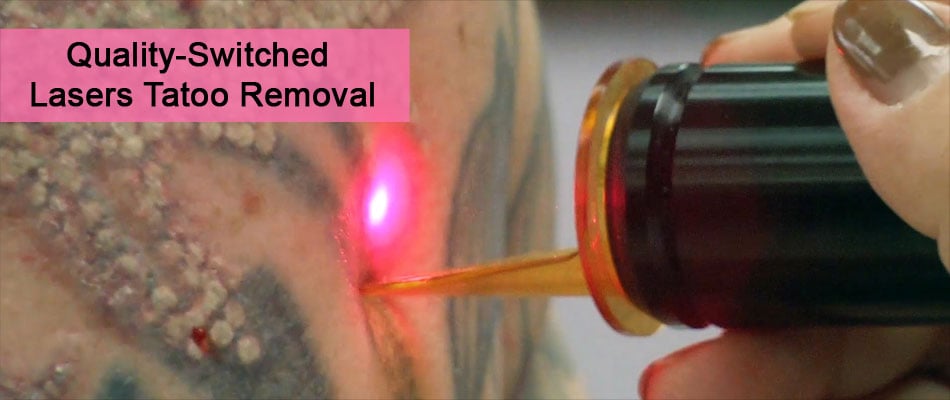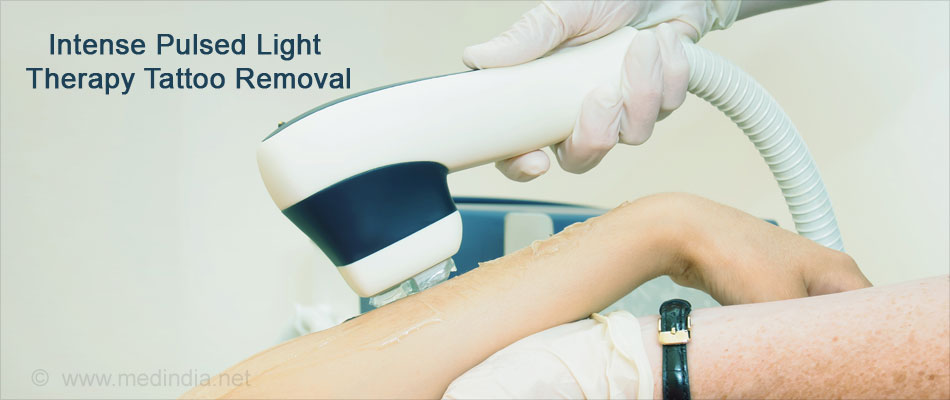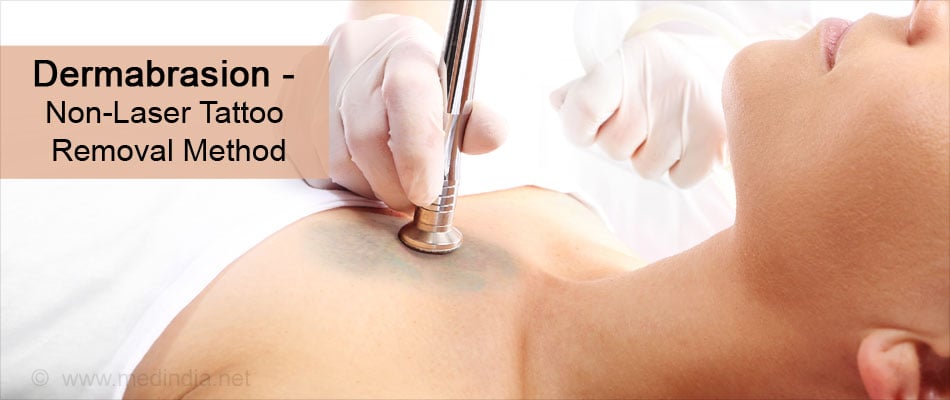- Complications of Tattoos and Tattoo Removal: Stop and Think Before you ink - (https://www.ncbi.nlm.nih.gov/pmc/articles/pmc4411590/)
- Laser Tattoo Removal: A Clinical Update - (https://www.ncbi.nlm.nih.gov/pmc/articles/pmc4411606/)
- Cryosurgery - (https://en.wikipedia.org/wiki/cryosurgery)
- Process of tattooing - (https://en.wikipedia.org/wiki/process_of_tattooing)
- Dermabrasion Tattoo Removal - (http://www.healthcentre.org.uk/tattoo-removal/tattoo-removal-dermabrasion.html)
How to Remove a Tattoo?
One in three American adults have at least one tattoo, according to the ‘The Harris Poll’ 2015. Around 47% of them are Millennial and one-third of them are Gen Xers. Compared to baby boomers, the Millennial and the Gen Xers have more, multiple tattoos. Millennial are referred to people who have reached their adulthood in 21st century. Gen Xers were born around early 1960’s to early 1980. Baby boomers were born after World War II.
Understanding of the process of tattooing will help to discuss tattoo removal. There are 3 layers of skin - epidermis (the outermost layer of skin), the dermis, (beneath the epidermis) followed by the hypodermis which is the subcutaneous layer.
A tattoo is a design made by puncturing wound into the skin, that penetrates as deep as the dermis layer; and filling it with ink of various colors. A needle bar with three to five needles filled with dye is attached to the oscillating machine to drill a puncture into the dermis layer and to fill it with color. Even as more and more people are wearing a tattoo, people without tattoo view them as aggressive and rebellious. Despite the fact that tattoo-related infections, severe itching, rash or swelling may persist for years, tattoos have become popular and are considered a part of one’s personality statement.
Tattoo Removal Methods
Tattoo removal means removing the ink from the dermis layer of the skin. Inking a tattoo may lead to bacterial, fungal infections; allergies, adverse immunological response and tumors due to the use of contaminated ink, inadequate disinfection of the skin and dermis penetration. Military service, new jobs, tattoo complications, stigma for tattoo culture, reversal of the hasty decision to get a tattoo; are few reasons which makes one to opt for tattoo removal.
Several methods including few home remedies have been resorted to, by people, to remove tattoos. Removing a tattoo involves reaching the dermis layer and pulling out the ink. A few of the methods are
- Laser
- Dermabrasion
- Cryosurgery
- Chemical Peels
- Salabrasion
- Natural Home Treatment (unverified)
Laser Tattoo Removal
In the laser process, intense light pulses are directed towards the tattoo, which result in the breaking down of the pigments in the dermis layer. The tattoo begins to fade as the ink and tattoo fragments are flushed out by the lymphatic system. Though laser method is considered safest, it may cause blisters, bruising and scabbing. There are several kinds of laser therapy that are used.
1. Quality-Switched Lasers (QSL) are based on concept of selective photothermolysis where laser light of different wavelengths is absorbed by different chromophores. In the case of tattoos, the exogenously placed ink is the chromophore, which is heated for no longer than its thermal relaxation time (TRT) so that the ink layeris destroyed by rupturing the pigment-containing cells. TRT is time taken for 50% of heat energy to be conducted away from the target tissue.

2. Non-ablative or Ablative Fractional Resurfacing (AFR) laser are generally used for anti aging process but can be used for tattoo removal as well.
Fractional lasers work by creating narrow, deep columns extending through the epidermis into the dermis through tiny little beams of light. AFR such as CO2 and Erbium are more invasive and requiremore recovery time as they vaporize the outer layers of the skin. This process causes the skin layers to heal and restructure (fenestrate) increasing the collagen production.
Non-ablative fractional resurfacing (NBFR) like Picosure, CoolTouch, Fraxel Restore and N-lite are less invasive and require less recovery time. They too use heat but do not destroy the skin.
Fractional resurfacing laser used along with QSL is a popular method for tattoo removal as it further reduces blisters, though the scar may remain. Picosure focuses energy at trillionths of a second making the pigment layer vibrate and shatter without burning surrounding tissue.
3. Picosecond Lasers are considered better than QSL asproved by various studies. In general, tattoo pigment is around 40nm in diameter, and thermal relaxation times of around 1 nanosecond (ns) with a shorter picosecond pulse duration, can better target the tattoo pigment breakup.
4. Multi-Pass Treatments or R20 helps reduce the number of treatment sessions by using four laser passes in one treatment session, with an interval of twenty minutes between each of the passes. Studies have been proved that R20 method is a superior method for tattoo clearance as compared to traditional single pass laser treatment.
5. Intense Pulsed Light Therapy is another tattoo removal method that breaks down the tattoo ink pigment in the body. However, it might not suit dark or tanned skin types.

Non-Laser Tattoo Removal Methods
Excision
This method involves cutting away a portion of one''s skin with a scalpel, to remove a tattoo. It is done by a surgeon using local anesthesia. It results in bruising and scarring.
Cryosurgery
The Greek word ‘cryo’ means ice cold, and ‘surgery’ means hand work. In this method, cold liquid at around −196 °C (−321 °F) is sprayed or rubbed on the skin area to cause the skin to tear apart. In some procedures, cryoneedles are also used.
Dermabrasion
This process requires spraying of a numbing solution and then sanding away the top layers of skin to reveal the unblemished skin layers underneath the tattoo. A rotating abrasion brush is used to sand away the skin. It requires local anesthesia and may lead to bruises, bleeding. The tattoo may lighten but cannot be completely removed. Freezing solution like liquid nitrogen or CO2 is applied to the skin where the tattoo is designed, before starting the process. After the process, vasoconstrictors like epinephrine are applied to minimize bleeding.

Chemical Peels
Chemicals like TriChloroacetic Acid (TCA), glycolic acid peel and acid injections are also used as methods to remove tattoo. These painful methods burn the skin and cause de-pigmentation and hypertrophic scars without removing the tattoo design significantly.
Salabrasion
This method uses loads of salt to be rubbed over the skin for 30 to 40 minutes with an abrasive like scrub. It causes bruises and at times local anesthesia is required. It will require several sessions and application of antibiotic ointment and a sterile gauze dressing. After a few days, the salabrasion affected region of the dead skin will scrape off, pulling the tattoo pigment away with it. It is a traditional method. It is highly painful and has high risk of infection and pigmentation of the skin. The salt paste and scrub might not penetrate to the dermis where the ink lies.
Home Remedies
Several natural remedies have been mentioned, however, their efficacy is not verified. They too may cause infection, pigmentation and might not penetrate to the dermis level. The natural mixture is rubbed on the skin where the tattoo is designed, for 30 – 40 minutes for over a week or month till the tattoo fades away. Some popular natural combinations for tattoo removal at home are
- Vitamin E oil, natural aloe vera gel And paederia tomentosa
- Vitamin E oil, natural aloe vera gel, and apricot scrub
- Lemon juice and salt
- Honey, salt And aloe vera
- Lavender oil massage

Lavendar oil is effective for scarring outgrowths, such as keloids. Use of salt may increase tattoo complications like severe bruising, pigmentation and non-healing wounds.
Cost Estimation Of Various Tattoo Removal Methods - Laser And Non-Laser
- Laser tattoo removal costs in the US range between $60 and $500 per session, depending on the city and tattoo size. Around 5 to 10 sessions may be required or it may even extend to 20 sessions.
- Single R20 treatment, containing 4 laser passes may cost 400$ per session.
- An average cost of intense pulsed light is $10 per pulse.
- Picosure tattoo removal may cost up to $50 per square feet of tattoo treatment.
- Fractional Laser Skin Resurfacing may cost $1,000 to $6,000
- In India, minimum cost per session could be 500 rupees while it may spike to 20000 rupees on the higher side. On an average, one tattoo removal session may cost Rs. 1000 to Rs. 7000.
- Dermabrasion cost may range from $1,500 and $4,000 depending on tattoo location on the body.
- Tattoo removal costs might not be covered under medical insurance. There could be additional costs involved.
The costs of tattoo removal (laser and non-laser) are quite varied depending on various factors like city, location and size of tattoo, number of sessions required and anesthesia or chemical used. It is advised to do a thorough study of tattoo removal methods that best suits you, and compare their costs. Getting a tattoo inked, is a painful procedure in itself and should be avoided, if possible. Tattoo removal is also a complicated process.








